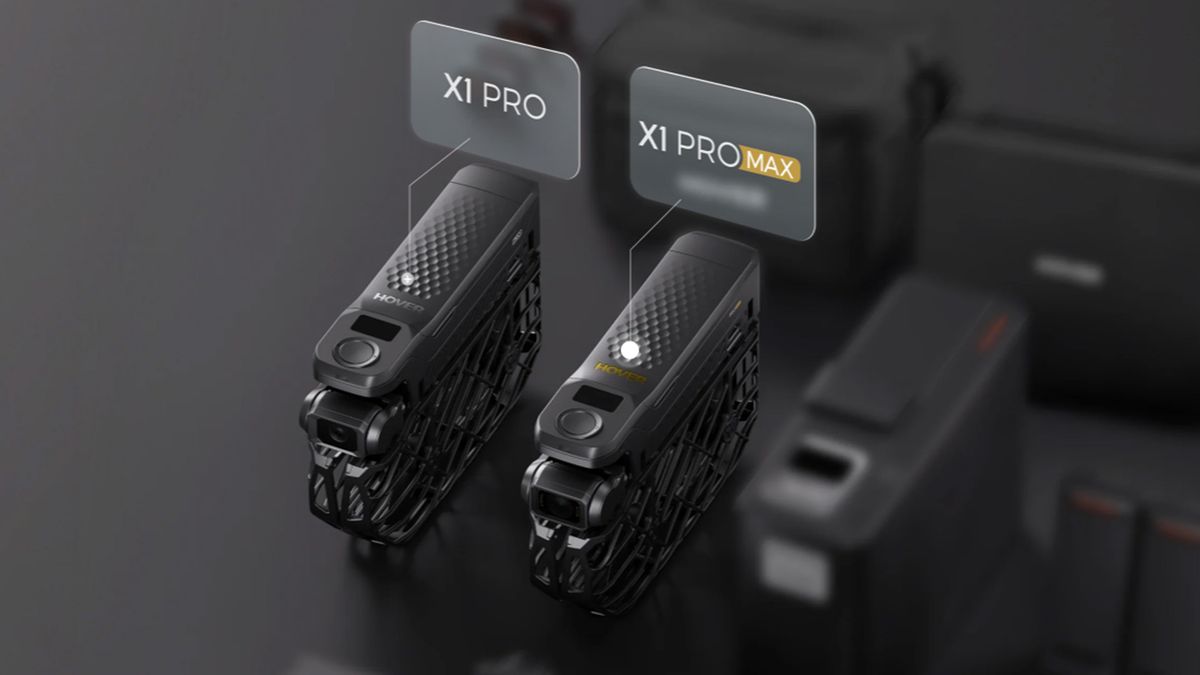
HoverAir has quietly unveiled two new follow-ups to its great X1 drone: the aptly named X1 Pro and X1 Pro Max. From what we can observe in this preview, the two devices offer multiple software updates and design improvements. However the extent of their upgrades differ between them.
Their appearance comes at an interesting time because a recent leak revealed rival DJI is set to launch its new Neo drone. The Neo is a lightweight machine seemingly aimed at beginners whereas HoverAir is going in the opposite direction. It’s focusing more on power.
The X1 Pro houses a 1/2-inch CMOS sensor alongside a 17mm wide-angle lens. Together, the camera is able to shoot 4K resolution videos at 60 FPS or 1080p at 120 FPS. It’s also faster than the previous model, capable of reaching auto-follow speeds up to 42 km/h (about 26 mph). DIY Photography, in their report, points out that’s a good speed for following users on their bike or jogging.
Unveiling HOVERAir X1 PROOmni-Terrain flying over water, snow, cliffs, capturing stunning shots in low light. Active rear collision detection ensures worry-free dolly track & zoom-out shots. 42 km/h follow speed, 4K/60fps, Level 5 wind resistance—perfect for any adventure! pic.twitter.com/Ti0SCHES8XAugust 13, 2024
Hardware upgrades
Design-wise, the drone isn’t as boxy as the old X1. It sports a sleeker design although it is larger measuring 149 x 173 x 39 mm and weighing 192 grams. HoverAir, in addition to the bulkier body, gave the design active collision detectors on the back, and most importantly, the ability to fly over water, snow, and off the edge of a cliff.
As TheVerge explains, one of the problems with the X1 is its VIO (Visual Inertial Odometry) system. It utilizes this tech to position itself above the ground, but the sensors have a hard time seeing “moving textures” like rippling water. So the drone could fall out of the sky.
If you look closely at the top of the drone, you’ll notice a button above a screen. It’s unknown what this is for as the feature isn’t acknowledged in the preview. Online speculation suggests it’s for choosing unique flight paths.
8K recording
The X1 Pro Max shares a lot of similarities with the Pro model sporting the same dimensions, features, and a flight time of 16 minutes. There’s only one discernible design difference that we can see in the images: the company logo is written in gold lettering instead of silver. Most of the major changes are internal.
Thanks to its 1/1.3-inch CMOS sensor and 16mm wide lens, the Pro Max can record 8K resolution videos in 30 FPS as well as 4K video in either 60 FPS or 120 FPS for slo-mo content. The footage is saved in the 10-bit HLG format which gives users “enough detail and color information to correct many issues” during editing. Plus, it has a “vision-based” collision detection system and supports Wi-Fi 6.
That’s pretty much all the important information we can gather at this moment. There’s still a lot we don’t know, like how much each model will cost, when they’ll launch, and what are those blurred accessories on HoverAir’s preview page? If we had to take a wild guess at some of them, we’re probably seeing carrying cases, spare batteries, and a charging dock.
We’ll just have to wait to learn more, and by the looks of things, it won’t be long. While we have you, be sure to check out TechRadar’s list of the best beginner drones for 2024.
You might also like
Services Marketplace – Listings, Bookings & Reviews
